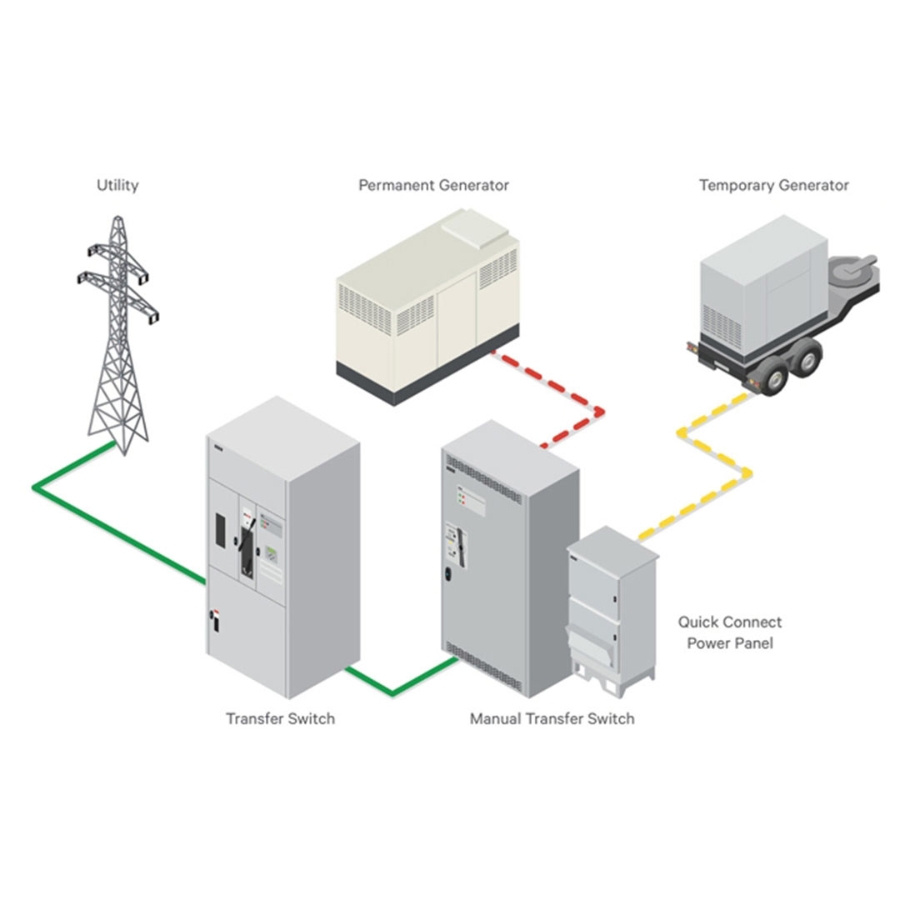
Data Center: How to Demonstrate Backup Power Readiness

An Overview of NFPA 110
The Uptime Institute reports that 36% of data center outages are power-related. To mitigate the risk of outages, the National Fire Protection Agency publishes NFPA 110 - Standard for Emergency and Standby Power Systems. It provides minimum guidance on the design, installation, maintenance, and testing of backup power systems, guidance that is referenced by other industry standards such as NFPA 70 – National Electrical Code. The test helps assure that the critical power system and its redundant sets operate as expected.
Key Provisions
NFPA 110 categorizes Emergency Power Supply Systems (EPSS), then prescribes requirements for installation, system maintenance, and periodic operational testing as follows.
EPSS Categories
NFPA identifies backup power systems by Class, Type, and Level.
Class
The code classifies EPSS into classes according to the amount of time that they must be able to provide power without refueling or recharging. Five time classes range from 5 minutes to 48 hours, and a sixth class allows the runtime to be defined by application, code, or the user.

Type
NFPA 110 classifies EPSS by how quickly backup power must become available. The maximum amount of time that the load terminals of a transfer switch can be without power are defined by four types that range from “basically uninterruptible” to 120 seconds, plus a fifth type for manual switches, which has no time limit, as shown in the table above.
Level
NFPA Level 1 systems are required where a failure of backup power could result in loss of human life or serious injuries. Level 2 systems can be used where backup power is less critical to human life and safety.
Common Application
The Class, Type, and Level assigned to backup power systems vary by the missions of the facilities they serve. For data centers, the class and level may depend on the maximum time that any Uninterruptible Power Supply can keep the facility running as well as the nature of the operations or services supported by the facility.
Environmental Requirements
The standard requires facilities to protect EPSS from exposure to environmental conditions. For outdoor locations, an EPS must be installed in an enclosure that can resist rain and snow pursuant to local building codes and minimize damage from flooding. For indoor applications, Level 1 EPS equipment must be installed in a dedicated room that is constructed to a two-hour fire resistance rating.
NFPA 110 also addresses heating, ventilation, and air conditioning requirements for the EPSS spaces. Temperatures cannot exceed those specified by a system’s emergency power equipment manufacturers. Level 1 systems require heating to maintain ambient temperatures above 4.5°C (40°F).
Installation Testing
Once installed, EPSS must be tested to prove they can deliver backup power as required. The testing is completed without and with load for the durations shown in the following table.

Maintenance Requirements
After an EPSS is installed, accepted, and placed in service, equipment maintenance and testing are necessary to demonstrate that backup systems can provide power when needed. NFPA 110 requires a written maintenance and testing program that complies with:
- manufacturers’ recommendations
- instruction manuals
- minimum requirements of the Standard
- the requirements of the Authority Having Jurisdiction
The standard prescribes a scope of maintenance activities. For transfer switches and paralleling gear, this includes checking connections, inspecting or testing for overheating and corrosion, cleaning components, and replacing contacts when required. For paralleling gear, the proper function of controls must also be verified. Maintenance and testing of batteries and fuel must be addressed, and all actions must be performed by qualified personnel. Testing must also be completed after the equipment is repaired; specific requirements can be found in the standard. The following table summarizes periodic requirements.

Notably, NFPA 110 Article 8.1.2 states, “Consideration shall be given to temporarily providing a portable or alternate source whenever the emergency generator is out of service...” and cannot meet the performance requirements for supplying power to loads. A quick connect panel and a permanent switching means can meet this requirement.
Streamlining NFPA 110 ComplianceProviding Adequate Load
To meet NFPA 110 test requirements, it is necessary to ensure that adequate load is applied to the backup power system and its generator(s). Quick Connect Panels offer a solution for adding a load bank whenever needed. Quick connect panels can also be used to bring in a temporary generator when a facility’s permanent generator becomes unavailable. See NEC Requirement for Permanent Manual Switching Means for more information on this solution.
Recording and Reporting Power Tests
Proving that successful testing has been completed requires facilities to record the associated data and compile reports of the results. The larger the power system, the more complex this becomes. Recording power events and metrics for each generator, transfer switch, and other power devices can prove challenging and require significant labor. Automated compliance reporting applications can automate and streamline the collection and compilation. For additional information, see Three Benefits of Automated Critical Power Reporting.
ConclusionThe maintenance and testing activities described in NFPA 110 form the basis for planning a backup power testing program. This includes both acceptance testing and periodic testing to verify that adequate backup power can be available whenever needed. Completing these tests is a key element in maintaining the trust of data center customers and end-users. Testing activities can be streamlined by providing connections for adding loads or even power sources, and by digitizing data collection and reporting tasks.
Any evaluation of a compliance strategy should be made only after reviewing NFPA 110 directly and/or consulting a qualified professional. For additional information about available solutions, contact an ASCO Power Technologies representative.
For more information on NFPA 110:
National Fire Protection Agency
• NFPA 110 - Standard for Emergency and Standby Power Systems






